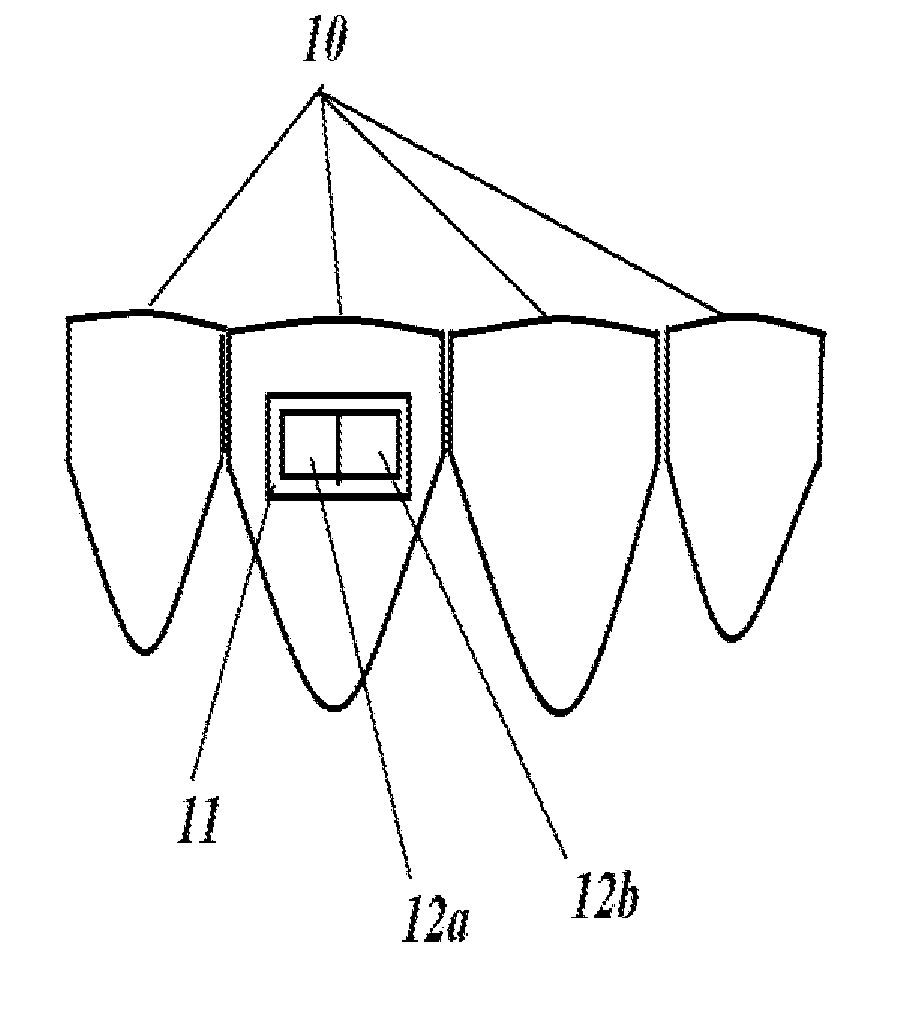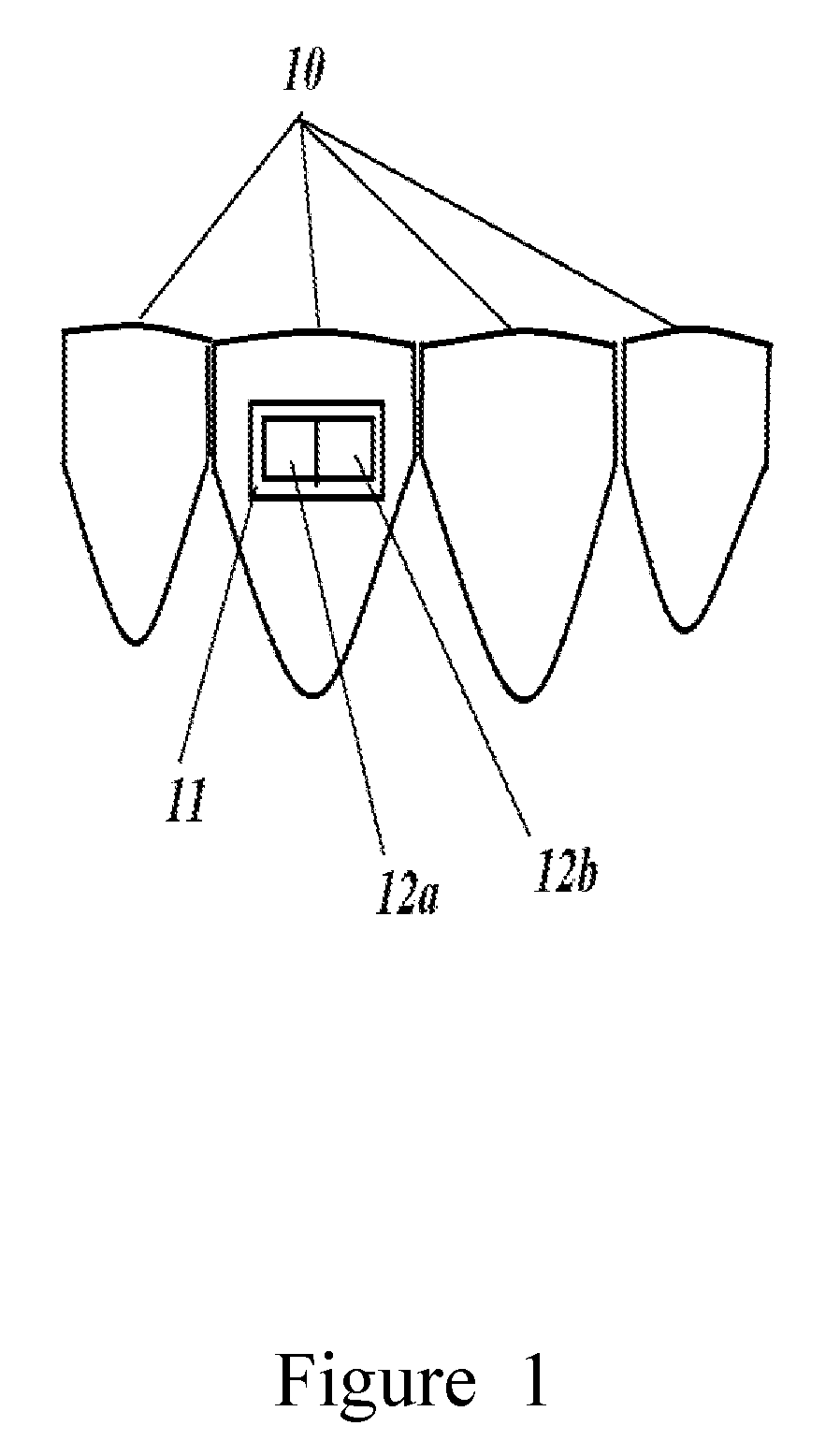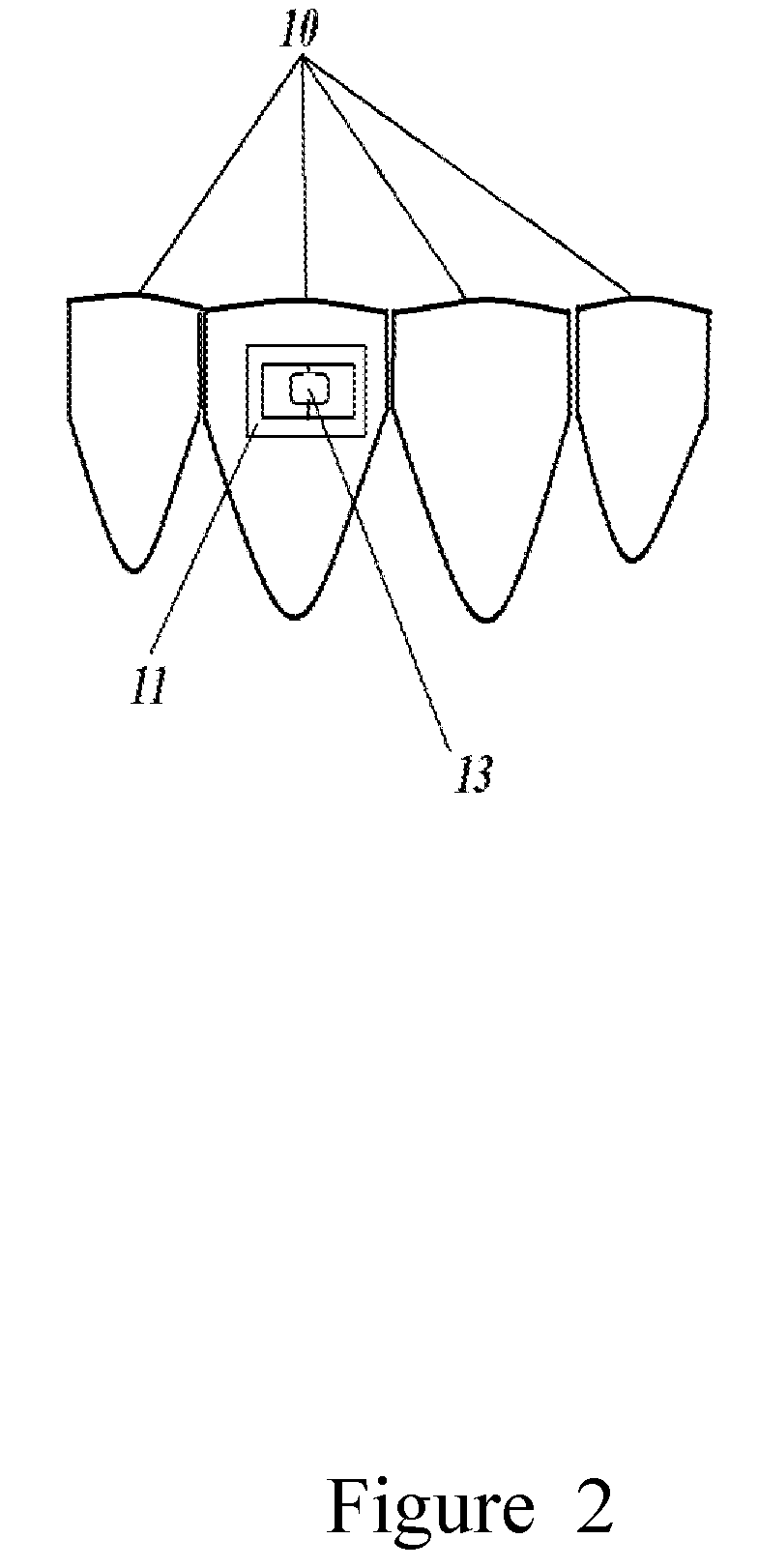Method and Apparatus for Preventing Plaque, Calculus, and Hard Deposits in Body Cavities and the Mouth
- Summary
- Abstract
- Description
- Claims
- Application Information
AI Technical Summary
Benefits of technology
Problems solved by technology
Method used
Image
Examples
Embodiment Construction
OF IMPLEMENTATION
[0034]In the principles of electrochemistry, the more positive reduction potential gives a more oxidative agent, the more negative reduction potential, gives more reductive agent and the more positive reduction reaction potential gives more spontaneous reaction.
[0035]The main object of the present invention is to prevent precipitation of calculus also known as tartar, which is composed of different types of precipitant compound. Precipitation prevention it means to change the priority of the precipitation reaction by changing the potentials to produce a non-precipitant compounds. This can be achieved by producing more positive reduction reaction potential than that of the precipitate to a non-precipitate species. Following are some examples.
[0036]Ca2+(aq)+2e−->Ca(s). The Standard Potential E° (volts) of this reaction is −2.76v (negative). It means that the opposite reaction potential [oxidation of Ca(s) to Ca2+(aq)] is +2.76v (positive). By providing a non-precipita...
PUM
 Login to View More
Login to View More Abstract
Description
Claims
Application Information
 Login to View More
Login to View More - R&D
- Intellectual Property
- Life Sciences
- Materials
- Tech Scout
- Unparalleled Data Quality
- Higher Quality Content
- 60% Fewer Hallucinations
Browse by: Latest US Patents, China's latest patents, Technical Efficacy Thesaurus, Application Domain, Technology Topic, Popular Technical Reports.
© 2025 PatSnap. All rights reserved.Legal|Privacy policy|Modern Slavery Act Transparency Statement|Sitemap|About US| Contact US: help@patsnap.com



